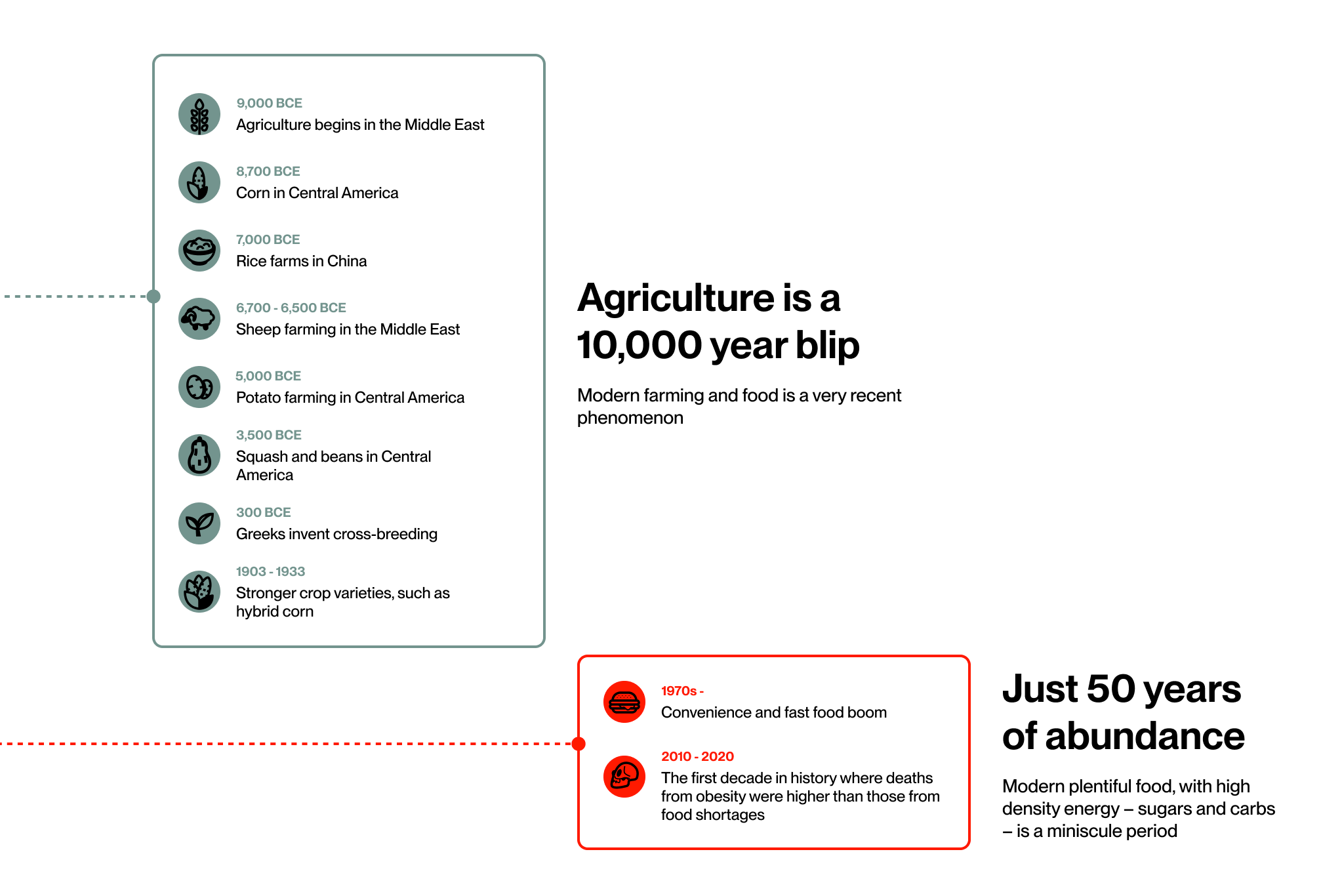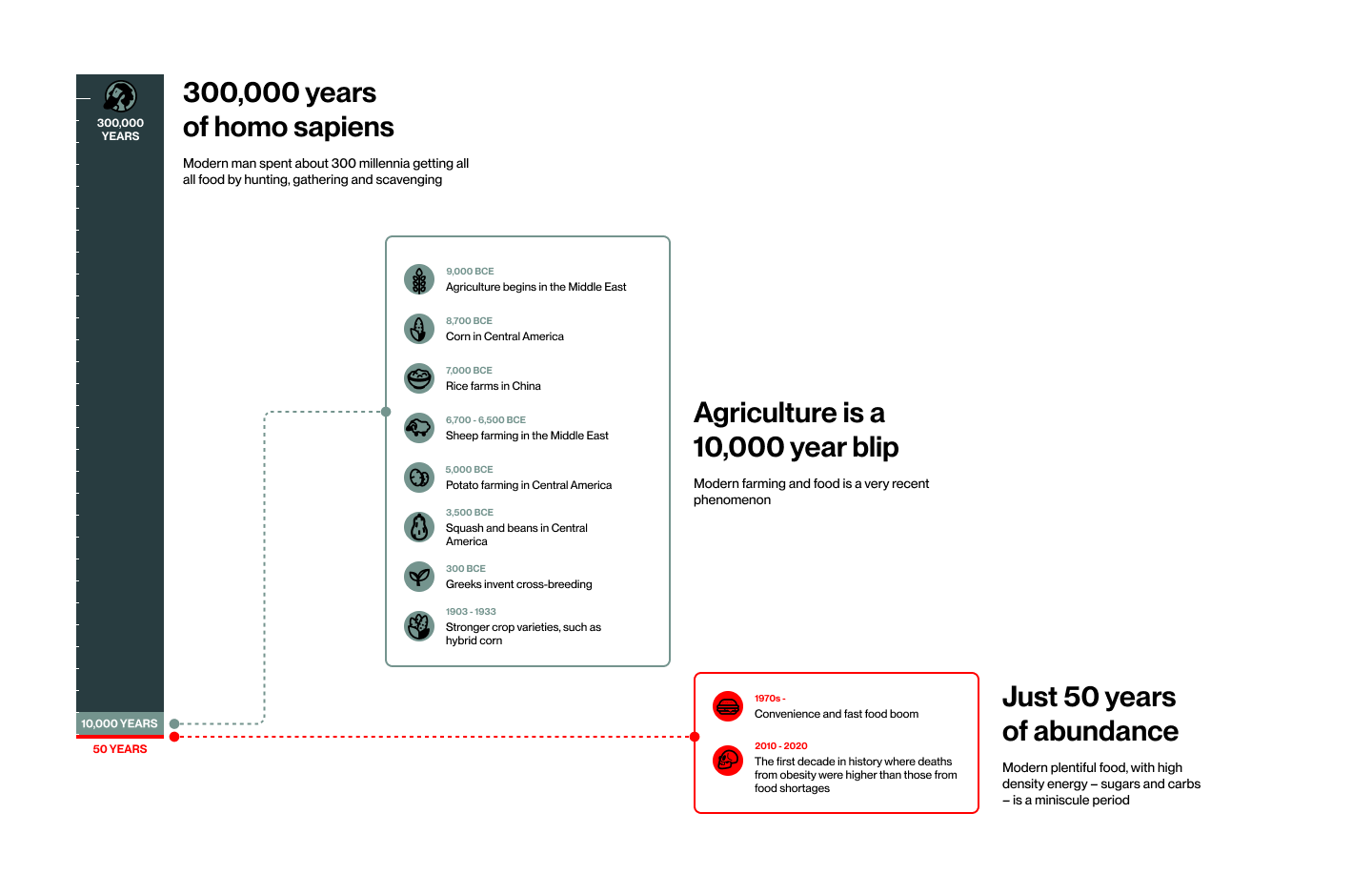
Humans didn’t evolve to live in a world of tweets and Twinkies. Our ancestors didn’t have set times for eating, sleeping, and working, and they certainly didn’t have their attention pulled in all directions throughout their waking hours. Instead, they ate, slept, moved, and rested as warranted by available resources — which were generally scarce, not abundant.
Over hundreds of millennia, humans’ bodies evolved to regulate energy for this way of life. When we eat, our blood glucose levels typically rise. (Blood glucose is what many people call “blood sugar.”) This rise triggers the body to release insulin, a hormone that enables the body’s cells to absorb glucose in the blood stream and convert it to energy.
Until just over 10,000 years ago, when agriculture started to become widespread, our ancestors’ main sources of calories came from the animals they hunted to provide protein and fat. These nutrients cause a smaller blood glucose spike, and a smaller subsequent insulin release, than do carbohydrates. As a result, our ancestors’ blood glucose levels tended to stay within a narrow range, providing a steady, stable source of energy.


Abundance, and obesity
Since agriculture began, and especially in the last fifty years or so of food abundance for many in the world, our food environment has massively changed, yet our Stone Age genetics remain similar. Stone Age us takes in energy and stores as much as it can for later, in anticipation of a famine that probably never arrives. This mismatch is at the heart of today’s obesity crisis.
One analogy is the hardware and software in computers: the ‘software’ — our environment, food supply, lifestyle — changes rapidly, while the ‘hardware’ it runs on — the human body, a genetic inheritance from 300,000 years ago — changes little, and is stuck behind the times, at odds with a dramatically different environment.
The body is ancient hardware that is ‘glitching’ with the modern software update: processed foods, with high energy density and massive, rapid yield of glucose that simply never existed in the Stone Age. Our satiety systems go haywire, we overeat the unexpected bounty, and obesity is the result.
Fight or flight?
Also over the course of hundreds of millennia, our ancestors evolved what we often call the “fight-or-flight” mechanism. When they perceived a threat, their bodies released adrenaline, a hormone that triggers an increase in blood glucose levels. This rise in blood glucose provided quick energy to deal with the threat, either by encountering it (fight) or escaping it (flight).
Both of these bodily systems — to process food, and to react to danger — are still with us, but the environment in which they evolved isn’t. Most of us have access to more than enough food to meet our energy needs, and, for many people, a significant amount of it comes from processed meals and snacks, high in simple carbohydrates, such as starch and sugar. These cause much greater fluctuations in blood glucose levels than was typical for our ancestors. As a result, our energy levels often spike and crash, interfering with our work, leisure, and sleep.
Modern life can also cause our adrenaline levels to spike several times a day, even though the “threats” are usually things like honking horns — much less dangerous than animals that want to kill and eat you. Small-scale but regular stress can throw our blood glucose levels out of whack.
Of course, you can’t — and probably don’t want to — live like it’s the Stone Age. You have 21st-Century responsibilities and goals. The solution is manage your blood glucose levels so that you can navigate the strange modern world with your ancient energy-management system.
Take control of your metabolism
This is where Limbo can help, by showing you how your body works, and letting you take charge of your food, habits and weight.
